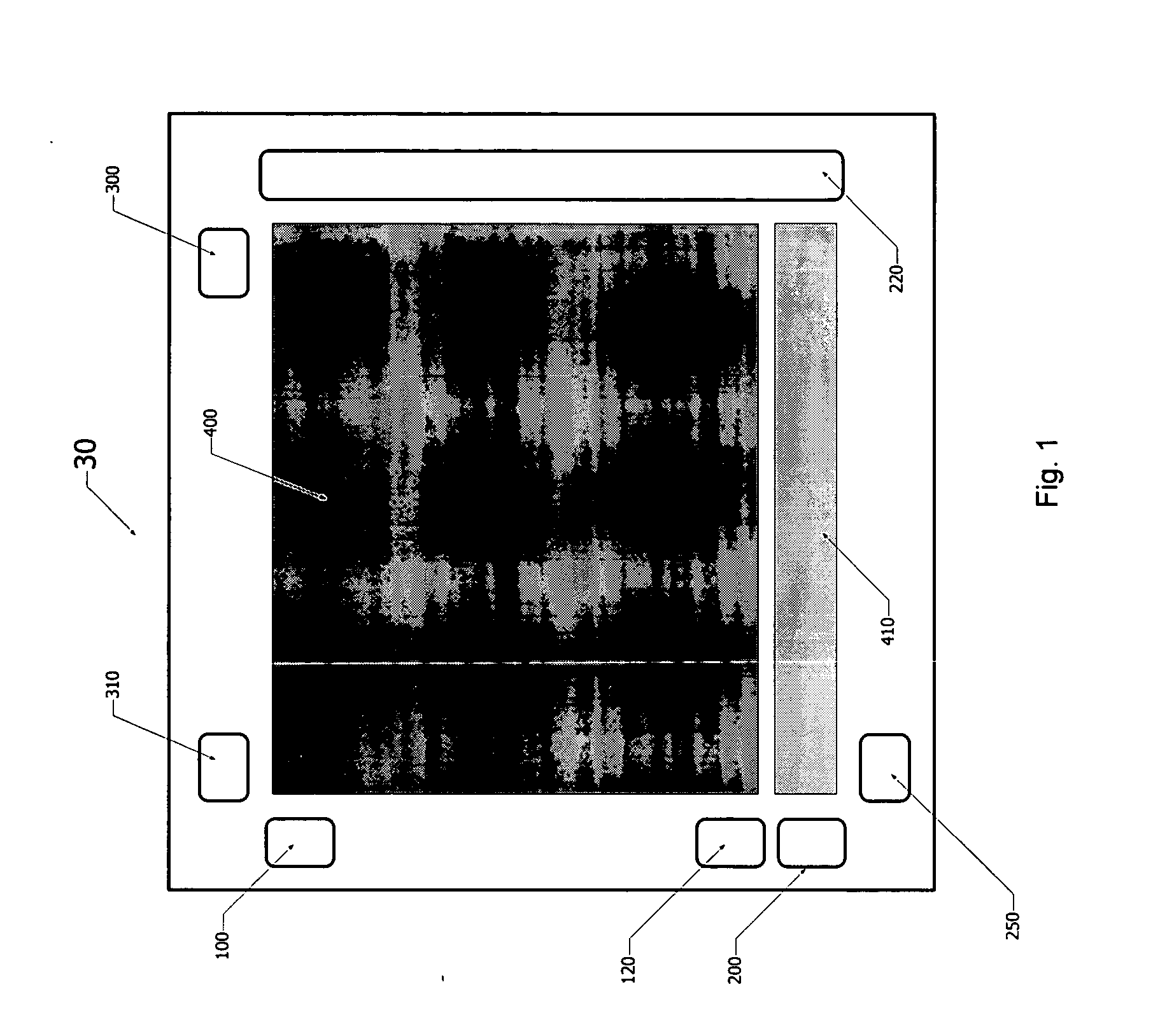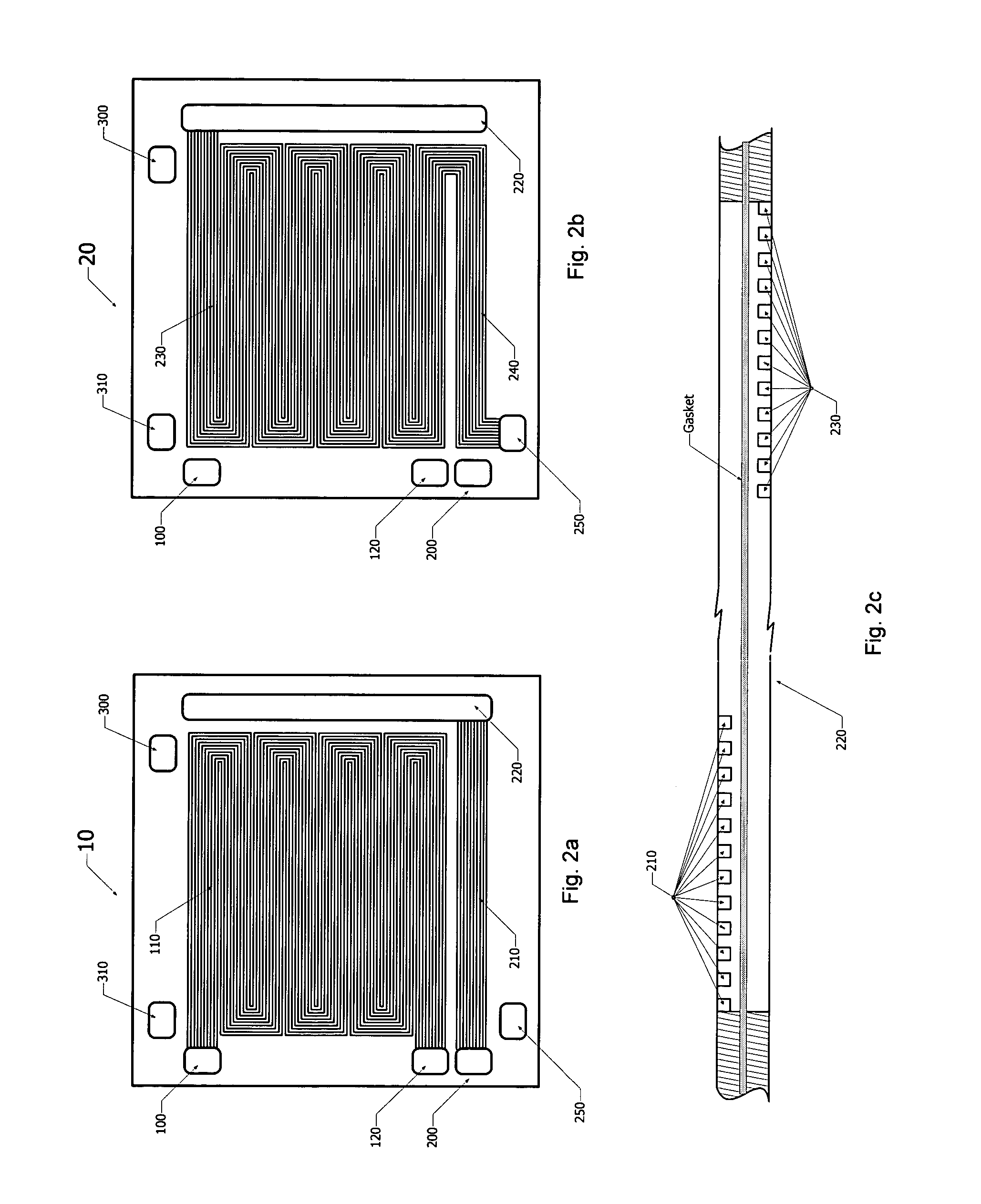Fuel cell with in-cell humidification
a fuel cell and in-cell technology, applied in the direction of fuel cells, fuel cell auxilaries, electrical equipment, etc., can solve the problems of reduced output current, reduced power supply, and inability to support the electrochemical reaction occurring in the fuel cell at a sufficient state, so as to improve the reliability of the fuel cell, simplify the fuel cell system design and manufacturing, and increase the compactness
- Summary
- Abstract
- Description
- Claims
- Application Information
AI Technical Summary
Benefits of technology
Problems solved by technology
Method used
Image
Examples
Embodiment Construction
[0040] Throughout the description, the term “membrane electrode assembly” (MEA) will be understood as consisting of a solid polymer electrolyte or ion exchange membrane disposed between two electrodes formed of porous, electrically conductive sheet material, typically fiber paper but not limited thereto. The MEA contains a layer of catalyst, typically in the form of platinum, at each membrane / electrode interface to induce the desired electrochemical reaction. Suitable MEA materials can include those commercially available from 3M, W. L. Gore and Associates, DuPont and others. For the present invention, a portion of the membrane facing each plate is non-catalytic, water permeable, and gas impermeable in order to allow humidity exchange between fluid streams flowing through the humidification area of the cathode plate and the humidification area of the anode plate. Preferably, the water permeable membrane is impermeable to the reactant gases to prevent reactant portions of the supply ...
PUM
 Login to View More
Login to View More Abstract
Description
Claims
Application Information
 Login to View More
Login to View More - R&D
- Intellectual Property
- Life Sciences
- Materials
- Tech Scout
- Unparalleled Data Quality
- Higher Quality Content
- 60% Fewer Hallucinations
Browse by: Latest US Patents, China's latest patents, Technical Efficacy Thesaurus, Application Domain, Technology Topic, Popular Technical Reports.
© 2025 PatSnap. All rights reserved.Legal|Privacy policy|Modern Slavery Act Transparency Statement|Sitemap|About US| Contact US: help@patsnap.com



